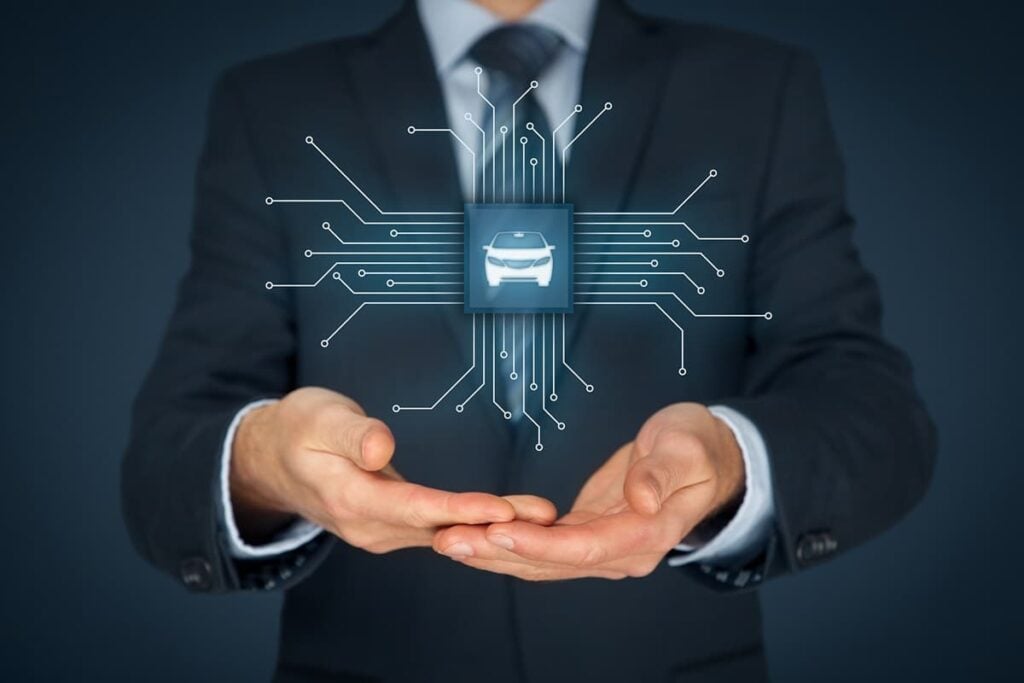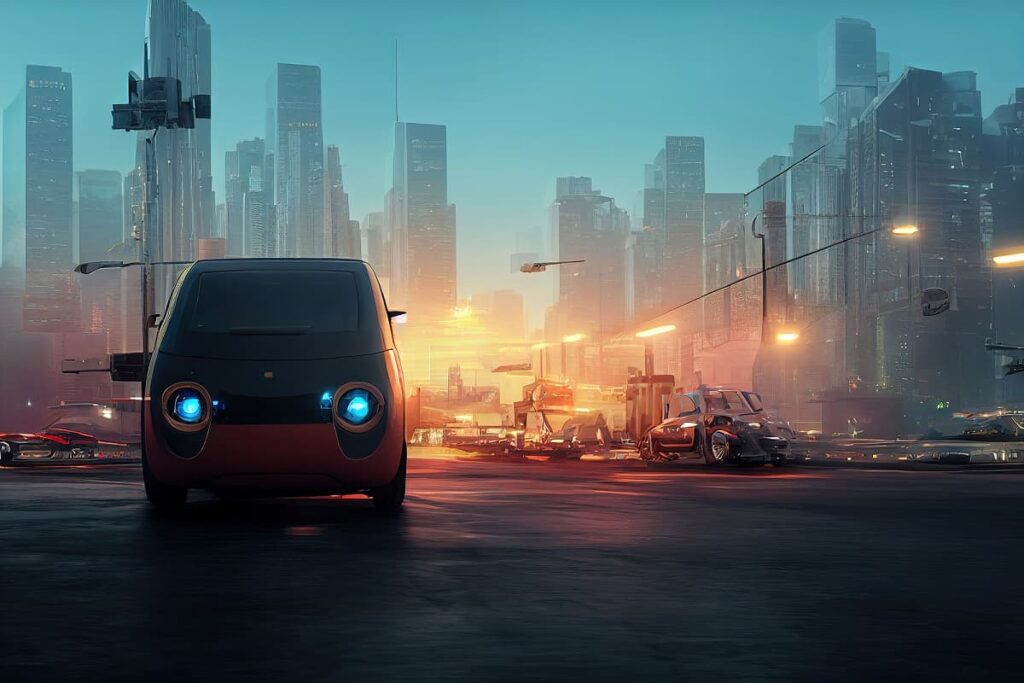6 Vehicle-to-Vehicle (V2V) Communication Startups
Table of contents
Table of contents

In a recent article, we covered 10 startups that are connecting cars and the huge effect they could have on roadways in the coming years. Another interesting (and related) technology that investors should watch is vehicle-to-vehicle (V2V) communication. The market extends to other methods of vehicle communication aside from just talking to “the cloud”. These other methods include vehicle-to-infrastructure (V2I), vehicle-to-pedestrian (V2P), and vehicle-to-home (V2H). Just in case there are not enough acronyms for you here, we can also use another acronym to describe all these types of methods which is “V2X” or “vehicle to everything”.
V2V communication allows vehicles to relay data to improve safety, speed up travel times, and plays a key role in autonomous driving. While there is some likelihood that V2V setups will be available aftermarket, most expect a fairly quick transition to V2V technology with the functionality coming as a standard feature in new car models. In December 2016, the U.S. Department Of Transportation issued a mandate that would require V2V communication capabilities in all new cars by 2023. That’s only 6 years from now, and startups are lining up to get a piece of that action. We’ve already seen some companies begin to include V2V communication capabilities, including the 2017 Cadillac CTS, which is outfitted with DSRC short-range radio communication devices that share data that include GPS locations, speed, and heading.
The most obvious benefit to allowing vehicles to communicate with each other is safety. When a car knows the position and input of other vehicles, the two can more easily avoid one another. However, the benefits of V2V tech run a little deeper than one would expect. Let’s take a look at some of the benefits of V2V communication.
- Safety. According to a Stanford study, 93% of vehicle accidents are caused by human error. With autonomous cars on the horizon, it will be important that those vehicles are not only able to analyze their surroundings, but communicate with them as well. Drivers could be alerted to upcoming dangers such as flooded roadways or traffic accidents. When vehicles are able to send and receive signals with other cars and infrastructure, accidents will be greatly reduced.
- Improved Traffic Management. One often overlooked benefit of a V2V system comes in the form of traffic management. V2V communication could limit congestion and help to guide vehicles down new routes. Cities could use the tech to reduce road damage and improve emergency response times. V2V communication uses real-time responses and infrastructure signals to alleviate congestion.
- Law Enforcement & Emergency Services Assistance. V2V communication could also play a big role in assisting emergency services. Police vehicles could use V2V communication to pull over vehicles or issue warnings to drivers. Ambulances and fire services could send communications to clear roadways in advance of their arrival.
- Driver Assistance. Driver assistance could be a huge benefit of V2V communication. Even simple improvements such as informing the driver of traffic conditions, finding parking spots, or improving parallel parking are simple ways V2V communication could help. Eventually, V2V communication could assist the driver in almost every aspect of driving.
V2V communication presents a lot of very exciting changes in the near future with the potential safety improvements acting as the driving force behind its adoption. Aside from safety, we see a plethora of other reasons why V2V communication would be to the benefit of every driver.
Kymeta

Ultimately Kymeta hopes that their technology is able to expand connectivity throughout the world. Their tech accesses a large amount of available satellite bandwidth, rather than the cellular spectrum that other startups have used.
Update 08/25/2020: Kymeta has raised $85.2 million in funding to speed up growth of its satellite-cellular antenna tech. This brings the company’s total funding to $302.8 million to date.
Autotalks
Autotalks was founded in 2008 and is a smart car company that specializes in V2V communication specifically for autonomous driving applications. The company has raised $75 million through four rounds of funding to date, and their product comes in the form of a chipset that aims to provide V2X solutions that offer reliability, security, positioning accuracy and ease of installation. Their latest product offering, the CRATON2, can be seen below:
For now, the company is currently in the designing and prototyping phase, with plans to enter high-volume production in 2019. Autotalks also recently announced their cooperation with Cohda Wireless.
Veniam

Currently, the company offers products aimed at fleets (Live Fleet), cities (Live City), and logistics operations (Live Port). Veniam sees their systems as a way to connect fleets, drivers, and cities to improve data sharing, safety, and logistics.
Savari

The Company offers a variety of solutions that include vehicle-to-vehicle, vehicle-to-infrastructure, vehicle-to-phone, and infrastructure-to-phone. Savari has their sights set higher than V2V, aiming to be a platform for smart cities as a whole.
RoboCV
We covered RoboCV in a previous article about industrial robots. The Moscow-based startup develops autopilot systems for logistics and warehousing companies. To date, the company has raised $3.5 million through three rounds of funding. The RoboCV team first caught media attention after taking part in Google’s Lunar X-PRIZE competition, but quickly pivoted. Now, the company focuses solely on creating robotic systems that replace people in routine logistics tasks. Their most popular product, the RoboCV X-Motion NG, is an automated forklift that handles the movement of horizontal pallets without the need for a loader operator. All of their vehicles communicate with other vehicles on the floor to avoid collisions and improve efficiency. This type of V2V technology could easily be ported over to any vehicle type.
Cohda Wireless

If you were counting, this is actually company #7. Yes, the article said 6 companies, but the guys at Commsignia convinced us to include their startup in our list as well. Given their Hungarian roots and our weakness for Tokaji we added them. Key takeaway here? If you send us free alcohol our generosity knows no bounds.
Commsignia
Founded in 2012, Commsignia is a Silicon Valley start-up with strong European roots. The company has forged an enviable reputation for the excellent performance and robust security of its V2X software stack that is hardware agnostic and compatible with multiple RTOS (real-time operating systems) as well as wireless technologies including 802.11p, 4G/LTE and the upcoming 5G. Onboard (OBU) and Roadside Units (RSU) together with integration kits and software tools complete the portfolio for Automotive and Smart City applications. Commsignia is involved in V2X pilots with leading OEMs and Tier 1 companies and has supported deployments including the European C-ITS corridor, Compass 4D in the UK and US DOT Tampa Hillsborough Expressway.
Having proven the performance of its V2X portfolio, Commsignia is now building the world’s first connectivity platform for the fusion of V2X and ADAS applications. The aim is to integrate ADAS sensors with V2X connectivity to bring the reality of safely connected and autonomous driving one step closer. The company received an undisclosed seed investment in 2016 and is currently raising funds to support the expansion of its sales and marketing presence in key markets.
Update 08/15/2019: Commsignia has raised $11 million in funding to strengthen its R&D capabilities and customer engagement teams to remain at the forefront of V2X innovations. This brings the company’s total funding to $11 million to date.
Conclusion
The V2V communication market is one that will become ubiquitous in the automotive industry. The need for this technology in autonomous vehicles is obvious, primarily it keeps the robots from crashing into each other, but there are many reasons why this technology will be useful in helping to power the smart cities of tomorrow. With V2V functionality being mandated in the United States by 2023, these companies won’t have to worry about the speed at which this technology is being developed and with the size of the auto industry, there’s room for more than one winner.
Sign up to our newsletter to get more of our great research delivered straight to your inbox!
Nanalyze Weekly includes useful insights written by our team of underpaid MBAs, research on new disruptive technology stocks flying under the radar, and summaries of our recent research. Always 100% free.



















